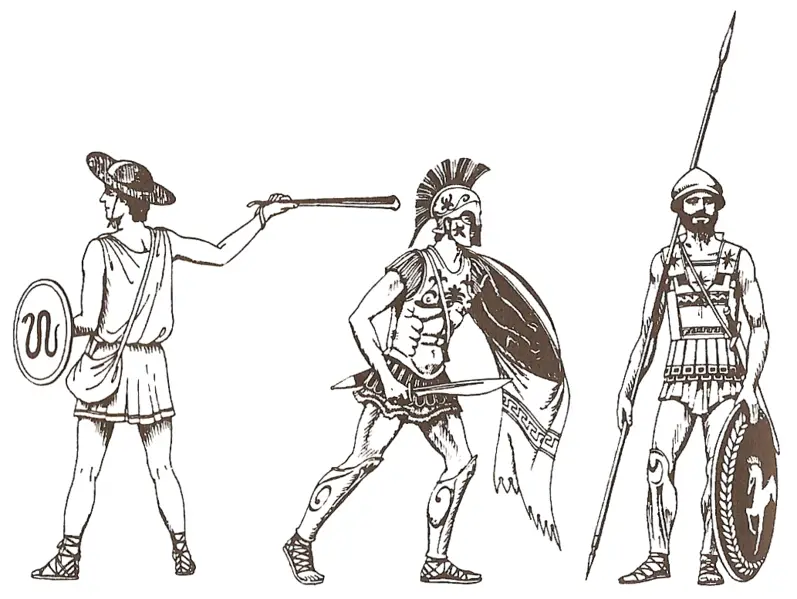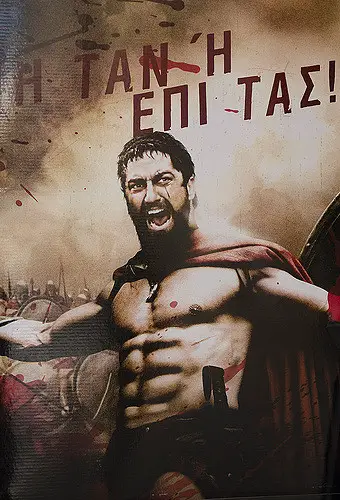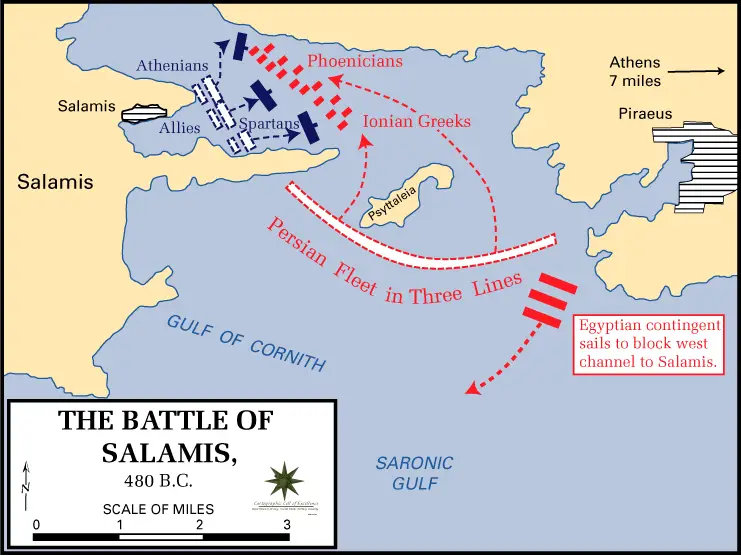The Persian Wars were a series of showdowns between the Greeks and the Persians from 492 BC to 449 BC.
The war involved two major invasions by Persia, in 490 and 480 BC. Some of history’s most famous battles were fought at Marathon, Thermopylae, Salamis, and Platea during the Persian Wars.
The Greeks ultimately won the Persian Wars. If the Greeks had lost, we would have lost many important contributions like democracy, architecture, art, and even the Olympic Games.
Who were the Persians?
During this time period, the Persians had the world’s largest and most powerful empire. Their lands stretched from Egypt to India.
The Greek city-states usually fought against each other. But they made an exception and worked together to fight the Persians. Greek city-states like Athens and Sparta united for the Persian Wars.

What started the Persian Wars?
Persia was continuing to expand its empire. They had conquered the Ionians, Greeks who lived along the coast of Turkey.
Athens and other Greek city-states had sent ships and weapons to help the Ionians. King Darius I of Persia did not like this, even though the Persians still quickly defeated the Ionians.
King Darius I decided to conquer Athens and the rest of Greece. He sent envoys (messengers) to Greece to ask the Greeks to submit to Persian rule.
The Greeks responded to this request by executing the envoys. Athens and Sparta promised to form an alliance to defend Ancient Greece.
King Darius did not like this either. He launched 600 ships and 25,000 men to attack Greece. The Persian army was much bigger than any army the Greeks could round up.
Battle of Marathon
In 490 BC, a Persian army of 90,000 men met a Greek army of 10,000-20,000 men at Marathon. The Persians fired many arrows, but the arrows did not do much damage against the bronze armor of the Greeks.
The Greeks had heavier swords and better spears and armor. They also had a very disciplined phalanx formation. In the end, the Greeks only suffered 192 casualties. The Persian army lost 6,400 men.
The Battle of Marathon quickly became legendary. The Persians fled home, but they would be back.
Battle of Thermopylae
King Xerxes was now the ruler of the Persian Empire. Around 480 BC, he gathered a huge invasion force to attack Greece. Xerxes had more than 200,000 soldiers and 1,000 warships.
The Persian army decided to attack Greece at the pass at Thermopylae on the East Coast. They were met by a small army of 300 men, led by the Spartan king Leonidas.
All 300 men from the much smaller Spartan army were killed, but they managed to hold off the massive Persian army for three full days. (This battle was the inspiration for the movie 300.)

Meanwhile, the Greek fleet held off the Persians at the naval battle of Artemision. By now, Persia had gained control of some of Greece, but the Greeks were a tougher enemy than they had expected.
These battles weren’t exactly victories. But they did buy the Greek army time and allow them to prepare for the battles to come.
Battle of Salamis
After the first Persian invasion, Athens built a mighty fleet of ships called triremes. In September 480 BC at Salamis in the Saronic Gulf, a Greek fleet of 300 ships faced about 500 Persian ships.
Once again, the Greeks were outnumbered. But they had the brilliant Athenian general Themistocles on their side.
Themistocles lured the Persian fleet into the narrow straits of Salamis, then hit the Persian fleet so hard that they had no way to escape. The fast, maneuverable Athenian ships slammed into the sides of the Persian ships and sank them.
The remaining Persian ships retreated.

The Last Battle: Battle of Plataea
After the terrible defeat at Salamis, King Xerxes returned to his palace. He left his general Mardonius in charge of the Greek invasion.
The Greeks and Persians tried to negotiate an agreement, but they could not find a compromise. The two armies met again at Plataea in 479 BC.
This time, the Greeks had gathered the largest hoplite (Greek soldiers) army ever seen. A total of 110,000 soldiers came from 30 of the city-states.
The Persians had about the same number of soldiers, or perhaps slightly more.
The Greek phalanx once again proved that it was superior. They defeated the Persian army and ended Xerxes’ hopes of conquering Ancient Greece.
Aftermath
Around this time, the Ionian states were sworn back into the Hellenic Alliance of Greece. The Delian League was established to fight off any future attacks from the Persian Empire.
Over the next 30 years, Persia remained somewhat of a threat. There were occasional battles and skirmishes (smaller unplanned battles) across the Aegean over the next 30 years.
However, mainland Greece had survived the greatest danger. Peace was officially declared in 449 BC with the Peace of Callias.
The Persian Empire had failed to conquer Greece, but they continued to thrive for 100 years.
Under the leadership of Alexander the Great, Greece eventually ended the Persian Empire in 331 BC, defeating King Darius III.
More on Ancient Greece.